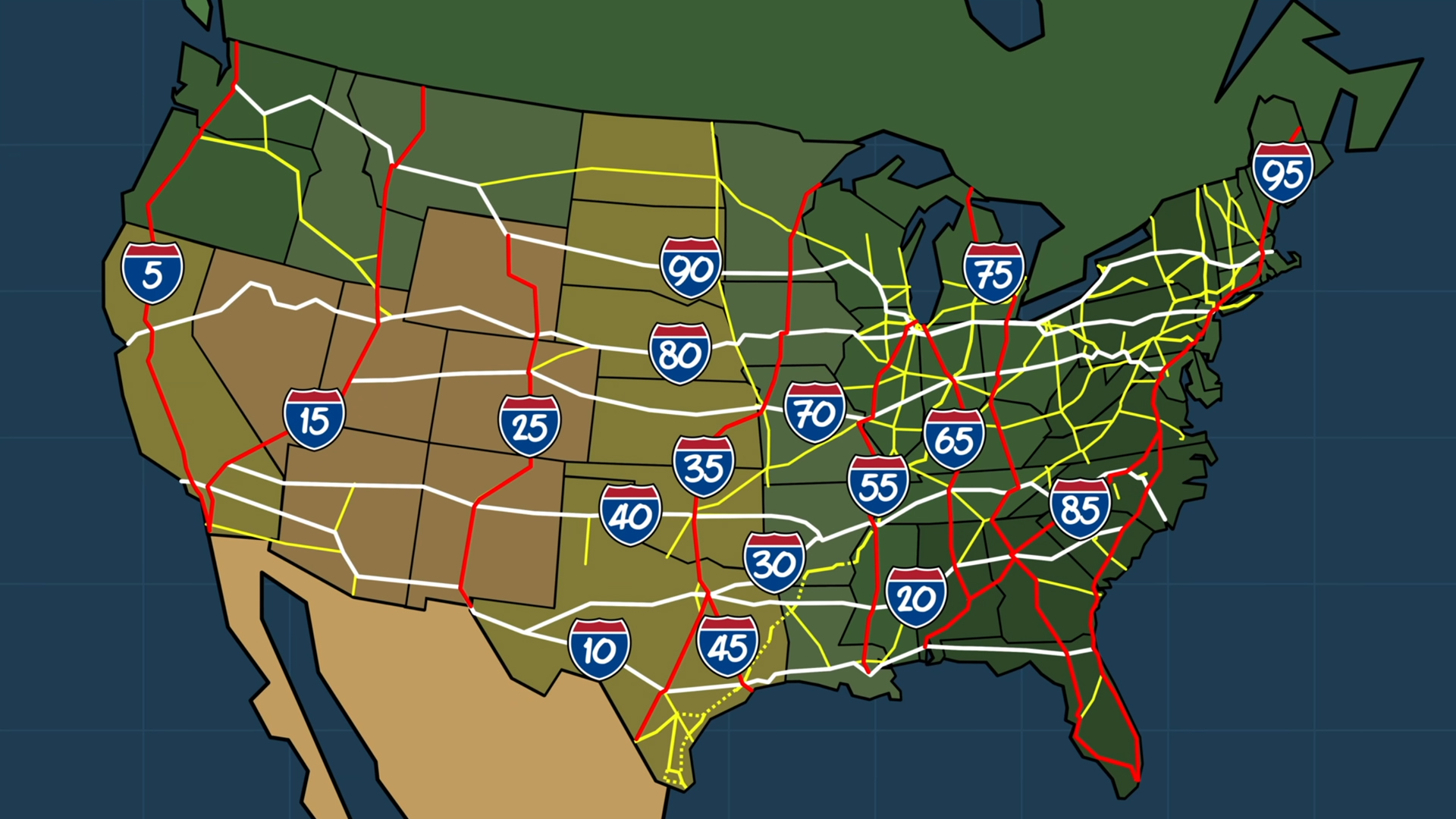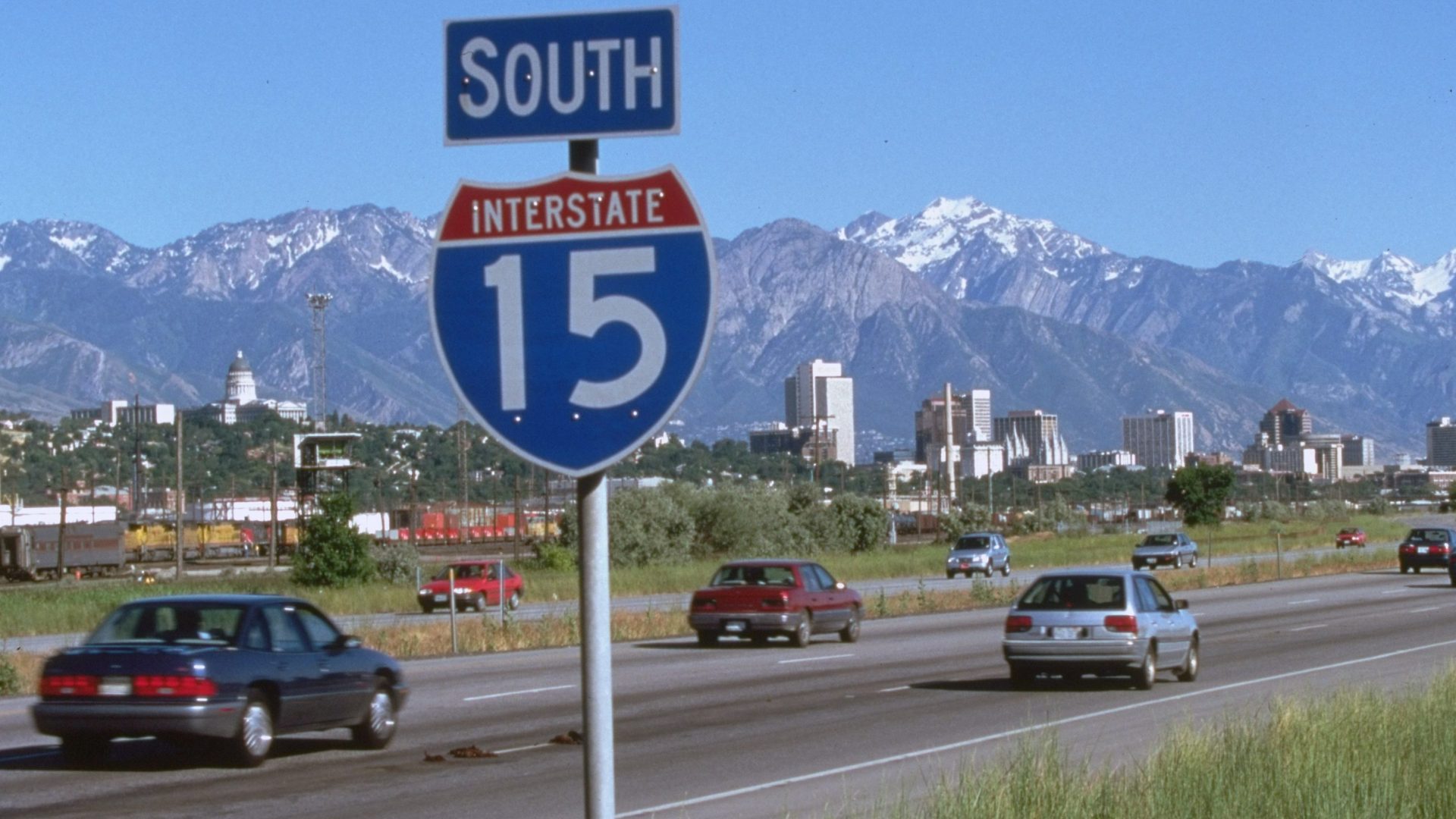

Next time you’re cruising on the interstate, take some time to spot all the different highway shields. Are there single digits? Double? Triple, even? What do the odd and even numbers actually mean? Believe it or not, there’s a legit method behind the madness that makes up the United States interstate highway system and how they get their numbers.
Way back in 1926, the U.S. Numbered Highway System was established, setting the groundwork for how the nation’s highways would be named and labeled. But it was the Federal Aid Highway Act of 1956 that actually helped establish the interstate numbering system that we’re talking about here today. To cite any federal standards would be boring and confusing to take in all at once; thankfully, we have YouTuber CGP Grey to walk us through this. Let’s take a virtual trip across America to understand just how this all works.

Just a quick note before you jump into the comments and yell at me: yes, there are exceptions, and I don’t get paid nearly enough to make the rules of the nation’s highways (I’ve asked, believe me). So don’t shoot the messenger, just soak up the sweet, sweet knowledge.
First, let’s talk major interstates. Essentially all of these highway systems have double-digit numbers, with just one pesky exception. East-west highway systems all end with “0” and are numbered increasingly higher as you progress further north. For example, I-10 runs through the southernmost states (California, Arizona, New Mexico, Texas, Louisiana, Mississippi, Alabama, and Florida), while I-90 makes its way across some of the northernmost (Washington, Idaho, Montana, South Dakota, Wisconsin, Illinois, Indiana, Ohio, Pennsylvania, New York, and Massachusetts).
North-south interstates end with a 5 and are numbered increasingly higher as you progress further east. For example, the westernmost major highway system running between California, Oregon, and Washington is I-5, and the easternmost is I-95, which travels through Florida, Georgia, South Carolina, North Carolina, Virginia, Maryland, Delaware, Pennsylvania, New Jersey, New York, Connecticut, Rhode Island, Massachusetts, New Hampshire, and Maine.

There are also plenty of interstates that don’t actually cross into other states. Texas has the only major interstate like this, and it follows the same naming convention as the rest of the continental U.S. Alaska, Hawaii, and Puerto Rico all have their own special naming convention that doesn’t exactly follow the standard system we’re talking about here, too.
Next up comes interstate mediums, which are suffixed with either an even or odd number. Evens mean that the interstate is east-west, and odds are north-south. Multiple medium interstates can exist with the same number. As the video below points out, I-76 is a highway in Colorado, and it’s also the interstate number of the Pennsylvania Turnpike. There are plenty of other examples of this across the U.S. as well.
Then there are minor interstates, all of which are represented by three digits instead of the usual two. The first number in the three-digit sequence is the secret sauce, while the last two represent the major interstate that it branched from. If the first digit is even, the interstate will eventually branch back into its parent; these are called “bypasses,” or “beltways” when encircling a landmark like a city. An interstate with an odd-numbered first digit is called a “spur” and will not connect back to its parent. If a minor interstate connects two major interstates, it is generally up to the state to decide which major interstate is used as the suffix of the minor.

Now you know the secrets of the major interstates in the U.S., so if your GPS ever acts up and all of the maps suddenly vanished, at least you’ll be able to navigate the highways across the States.
If you’re more interested in knowing the exceptions to the norms, CGP Grey does a great job at showing them off. You can watch his video, complete with fun little stick-figure animations, below.

Got a tip or question for the author? You can reach them here: Rob@TheDrive.com